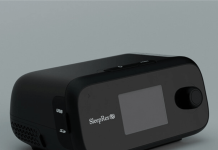Glaukos announced that the FDA approved its Epoxia incision-free alternative to traditional corneal cross-linking procedures.
Epoxia offers an advancement in corneal cross-linking for the treatment of keratoconus. Glaukos describes the rare, sight-threatening disease as “currently far too often undiagnosed and untreated.”
Aliso Viejo, California-based Glaukos developed Epoxia to eliminate the need for the removal of the corneal epithelium — the eye’s outermost layer. The novel, oxygen-enriched topical therapeutic is activated by UV light, designed to eliminate the pain associated with epithelium removal. It also streamlines procedures and minimizes recovery time.
Related: Rhythio wins FDA breakthrough nod for injectable electrode tech for defibrillation
Glaukos offers Epoxia based on two formulations, Epoxia HD and Epoxia. Sequentially administered during the cross-linking procedure, these formulations are followed by UV activation in an oxygen-enriched environment.
FDA approval came on the heels of results from two pivotal trials randomizing more than 400 patients. Both trials successfully achieved their pre-specified primary efficacy endpoints and demonstrated favorable tolerability and safety profiles.
Glaukos plans to launch Epoxia in the first quarter of 2026 and. make substantial investments in patient awareness and access. It intends to streamline patient access support programs and support co-pay assistance to reduce financial barriers. The company also wants to integrate healthcare professional and patient-centric strategies to improve education and engagement.
“The FDA approval of Epioxa ushers in a new standard-of-care for patients suffering from keratoconus with the first FDA-approved topical drug therapy that does not require removal of the corneal epithelium,” said Thomas Burns, Glaukos chair and CEO. “Epioxa is designed to significantly improve patient comfort and minimize recovery time, representing a game-changing new treatment for patients suffering from keratoconus. We appreciate the clinical investigators and study participants in the clinical trials for their instrumental roles in helping us reach this important advancement. This approval marks a major milestone in our mission to improve patient access to sight-saving therapies, and we are excited to bring this transformative therapy to market for the benefit of patients.”






